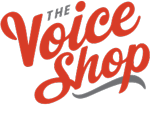By Nate Meyers
Laying down the tracks of your voice can be a discouraging hill to climb. I know. It kept me from starting my journey for YEARS—no exaggeration—years. Just take that first step! I have some of the basics below for you. You’ll find that you can achieve great results with the right tools and a bit of practice! Let’s break it down step by step, making it as approachable as possible.
1. Choosing Your Equipment
Microphone
Type: A good condenser microphone is your best friend in voiceover work. It captures the nuances of your voice beautifully. Don’t worry—many great options won’t break the bank! Models like the Audio-Technica AT2020 and Rode NT1 are fantastic choices for beginners.
Audio Interface
Think of an audio interface as a bridge connecting your microphone to your computer. It’s essential for getting clear sound. Brands like Focusrite and PreSonus have beginner-friendly options that are easy to use.
Headphones
Investing in a pair of closed-back headphones is a smart move. They’ll help you monitor your recordings without any distracting background noise. Models like the Audio-Technica ATH-M50x are popular for their comfort and sound quality.
Pop Filter
A pop filter is a small, affordable accessory that can make a big difference. It reduces plosive sounds (like “p” and “b”) that can muddy your recordings. They’re easy to set up and well worth the investment.
Good equipment is essential but does not have to be expensive to get started.
Acoustic Treatment
Consider creating a cozy recording space. Soft furnishings like blankets or pillows can help absorb sound and reduce echoes. This is an easy way to enhance your audio quality!
2. Setting Up Your Recording Space
Location: Find a quiet room to focus on your recording without interruptions. You’ll be amazed at how much this improves your sound quality!
3. Installing Your DAW
Choose a DAW: A Digital Audio Workstation (DAW) is where the magic happens! Options like Audacity (free) or GarageBand (for Mac users) are user-friendly and perfect for beginners. Don’t hesitate to explore tutorials—they’ll make learning a breeze!
Installation: Download and install your chosen DAW. The process is straightforward, and you’ll be up and running in no time!
Digital Audio Workstations (DAWs) like Garage Band are easy (and free) to use to capture your voiceover recordings.
4. Connecting Your Equipment
Connect the Microphone: If you have an XLR microphone, simply connect it to the audio interface. USB microphones are even easier—just plug them into your computer.
Connect the Audio Interface: Plug your audio interface into your computer via USB. Follow any setup prompts, and you’re almost there!
Headphones: Connect your headphones to the audio interface to hear yourself clearly while recording.
5. Configuring Your DAW
Open Your DAW: Launch your DAW and let the creativity flow!
Audio Settings: In the preferences, select your audio interface as the input and output device. Although setting this up may seem technical, it’s a straightforward process that will empower you to record.
Create a New Project: Start a new project and add an audio track for your voice. You’re officially ready to record!
6. Recording Your Voice
Setting Levels: Do a quick test to set your recording levels. Speak naturally, adjusting the gain until your levels peak around -12 dB to -6 dB. This ensures you capture clear sound without distortion.
Monitoring: Use direct monitoring on your audio interface (if available) to hear yourself through the headphones while recording. This can boost your confidence!
Start Recording: Press the record button and let your voice shine! Take your time; remember, doing multiple takes is perfectly fine. Each attempt is a step toward improvement.
7. Editing Your Recording
Stop Recording: Once you’re done, stop the recording and listen to your take. Celebrate your effort, regardless of how it sounds—this is all part of the learning process!
Editing Tools: Use the editing features in your DAW to enhance your recording. Most DAWs have intuitive tools that make this process easier than you might think.
Effects: To polish your audio, consider applying basic effects like compression and equalization. These are powerful tools that can help your voice stand out!
8. Exporting Your Recording
Finalizing: Once you’re happy with your edits, export your final recording. WAV files are great for high quality, while MP3s are perfect for sharing.
Settings: Choosing standard settings (like 16-bit/44.1 kHz) to maintain quality when exporting. You’re getting closer to sharing your voice with the world!
9. Continual Improvement
Practice: Embrace the journey! Regular practice is key. Experiment with different styles and techniques to discover what resonates with you.
Listen Critically: Keep listening to your recordings with an open mind. Each take is a chance to learn and grow.
Learn: Explore tutorials and resources. The more you know, the more confident you’ll become!
Don’t be discouraged; start laying your first tracks TODAY!
Starting your voiceover journey may feel like a big step, but remember, the expert has failed more times than the novice has tried. With each recording (no matter how cringy), you’re honing your craft and building your unique voice. Embrace the learning curve, stay patient, and, most importantly, enjoy the process! You have the potential to create something truly special. Dive in, have fun, and watch your skills flourish!
Try a voiceover class at The Voice Shop. There is a wide range of online or in-person classes for beginners with top industry voiceover coaches.
Get started today and boost your voice-acting capabilities with proven techniques and guidance.
#voiceover #voiceactor #voiceoverclasses #voicecoach #voiceovertraining



